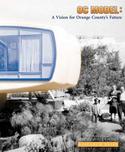Our mental model of the world shapes our behavior at fundamental levels in ways we often can’t even recognize. I was struck by this when reading two books almost back to back, Scott Adams’ How to Fail at Almost Everything and Still Win Big and Peter Thiel’s Zero to One.
Both authors lay out a schema for modeling the future and how to behave relative to it, but come to very different conclusions. read more »






















